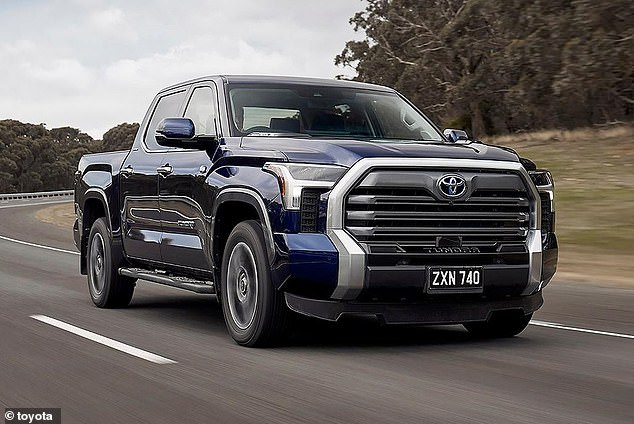Another giant American-style pick-up truck is coming to Australia: Toyota will launch the Tundra Down Under in November, despite a growing backlash from both experts and the public against the hulking utility vehicles.
The Tundra, which will be priced at around $150,000, follows in the footsteps of other giants such as the RAM 1500, Chevrolet Silverado 1500 and Ford F-150, which have gained popularity among Australian drivers.
While many are excited about the launch of the Tundra, there are also significant concerns about the need for such large vehicles in Australia.
Carla Hoorweg, director of the Australasian New Car Assessment Program, said the organisation had received “a lot of concerns from the community” about mega-vans.
“We’re looking at vehicles that are being designed for the U.S. market, they’re not necessarily going to have a focus on pedestrian protection or protection of vulnerable road users, that’s not a focus in those regulations,” he said. carguide.com.au.
“So we know there will be a gap there.”
The domestic launch of the Tundra (pictured), which will compete with the RAM 1500, Chevrolet Silverado 1500 and Ford F-150, has been six years in the making.
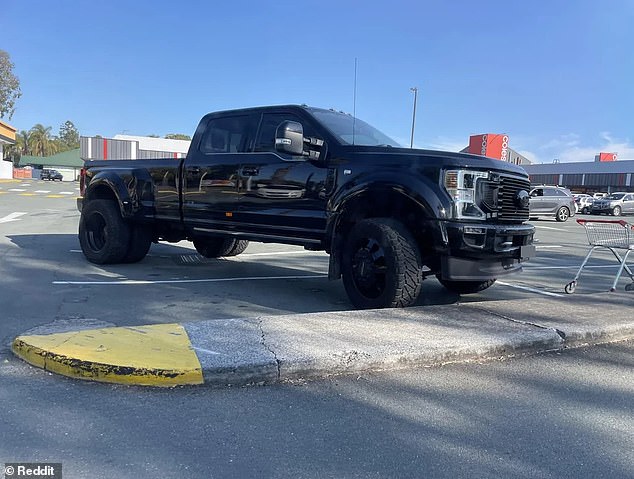
American-style pick-up trucks (such as the privately imported Ford F-350 pictured above) are gaining popularity across Australia.
Ms Hoorweg said the United States lacks specific regulations for pedestrian protection from impacts, unlike Australia.
As a result, many of these vehicles do not meet Australian design standards.
“We are considering what our options are around physical testing, so there is the potential to do pedestrian impact testing,” he said.
But for now, full crash tests of these vans are not possible for ANCAP because of the millions of dollars needed to purchase five vehicles of each model needed to carry out the tests.
Russell White, chief executive of the Australian Road Safety Foundation, warned that US-style trucks have larger blind spots.
“The larger these types of vehicles are, the greater the risk that blind spots will be large enough to obscure vulnerable road users, so having things like front-facing cameras should definitely be part of overall safety,” White said.
‘As we have seen with reversing cameras, it is another tool that a driver can have to have the information they need to operate the vehicle.
“As they become more popular and there are more of them, unless something is done to analyze their safety rating to evolve them over time, we could potentially see more incidents on the roads.”
Samantha Ratnam, leader of the Victorian Greens, said Australian roads were not designed to accommodate monster trucks and argued owners should be forced to pay higher registration and parking fees for them.
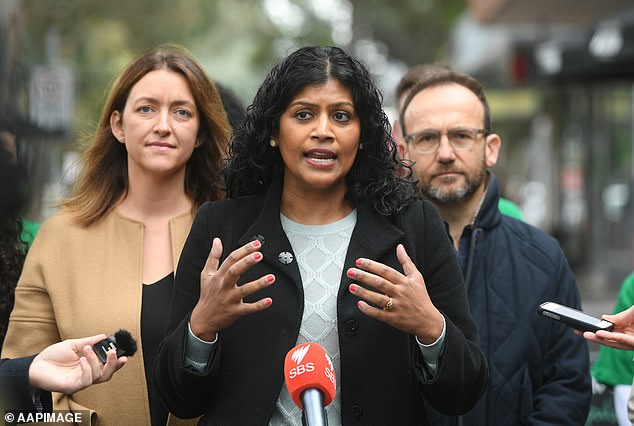
Samantha Ratnam, leader of the Victorian Greens, said Australian roads were not designed to accommodate monster trucks.
“It is an undeniable fact that large vehicles are dangerous. They have blind spots up to four metres in front of the vehicle,” Ratnam said.
‘And it is no coincidence that a child is eight times more likely to be killed by a larger utility vehicle than by a lighter car.
“Not to mention the staggering amount of pollution caused by these beasts.”
“Large pickup trucks have a role in regional areas, but these luxury vehicles, which often cost more than $100,000, have significantly higher emissions and are more dangerous to pedestrians and cyclists than regular passenger cars,” he wrote on Instagram.
“If we want to reduce emissions from our transport and reduce road deaths, we need to see fewer of these monster cars on our roads.”
Meanwhile, in the United States, the National Highway Traffic Safety Administration has announced plans to crack down on large pickup trucks, SUVs and vans after pedestrian deaths rose a shocking 57 percent between 2013 and 2022.
However, many Australians are also calling for a complete ban on American-style pickup trucks in Australia.
“I shudder every time I see Australians driving these American-designed trucks and making up for it,” said one.
“These vehicles make me irrationally angry. I can’t understand what kind of person buys them,” added another.
“They’re no better than the most sensible work cars. They’re totally impractical. They’re a disgrace to the planet. I hate them so much.”
Pickup truck owners have regularly been criticised for taking up multiple parking spaces.
“This isn’t about helpfulness, it’s just about telling everyone else a big, aggressive ‘fuck you,'” one commenter wrote.
“This country is not built to accommodate full-size American cars,” wrote another.
“Unless you really need that (truck), you’re making life worse for those driving around you and parking next to you,” they said.
“Let’s not allow the unnecessarily large vanity culture of the U.S. to take over here, as the tipping system is trying to do.”
But the outrage isn’t stopping Toyota from launching the Tundra in Australia.
The trucks will be manufactured in the US state of Indiana and will leave the factory there. left-hand drive before being stripped down and rebuilt as a right-hand drive vehicle using LandCruiser 300 Series components.
Toyota Tundras are much larger, more powerful and much more expensive than Australia’s most popular pickup truck, the Hilux.
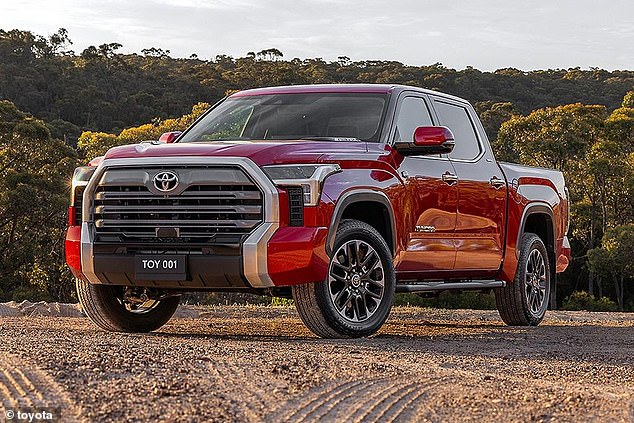
The domestic launch of the Tundra (pictured) will compete with the RAM 1500, Chevrolet Silverado 1500 and Ford F-150
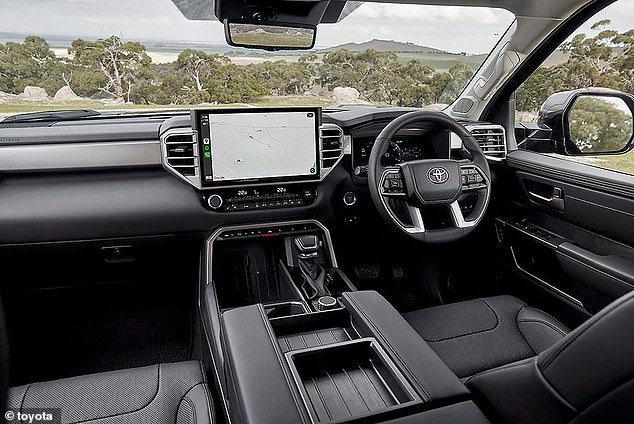
Standard equipment includes synthetic leather upholstery, heated and ventilated front seats, dual-zone ventilation, wireless phone charging and a 12-speaker JBL sound system (pictured).
Tundras are up to 6.2 m long, up to 80 cm longer than a Hilux and, at 2 m high, up to 30 cm taller.
While converting right-hand drive cars to left-hand drive cars is quite common in the aftermarket, Toyota has never before approved such a project that allows the car to be sold with a full factory warranty at a dealership.
“This announcement marks the first time – in fact, anywhere in the world – that we at Toyota have taken a vehicle built in a country other than Japan, exported it to a third country, redesigned it with a local partner, performed final assembly at a non-Toyota factory and sold it as a 100 percent Toyota-branded vehicle,” said Toyota vice president of sales, marketing and franchise operations Sean Hanley.
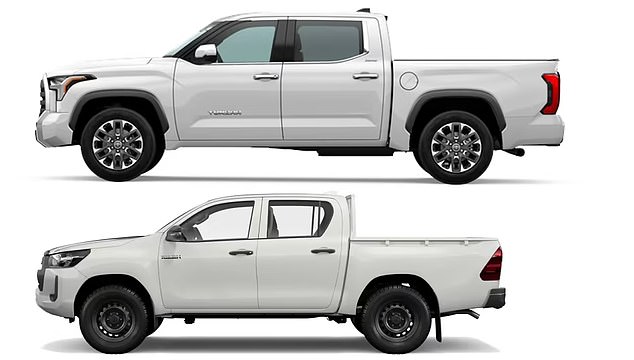
The Tundra (top) dwarfs Toyota’s HiLux (bottom), with the new pickup measuring 5,933mm long and 2,037mm wide compared to the classic’s chassis of just 5,265mm long and 1,800mm wide.
‘This confirms that the right-hand drive Tundra meets Toyota’s global standards for consistency, durability and reliability.’
The Tundra will initially be offered in Australia with a 3.5-litre twin-turbocharged V6 hybrid engine generating a combined output of 326kW/790Nm.
Standard equipment includes synthetic leather upholstery, heated and ventilated front seats, dual-zone ventilation, wireless phone charging and a 12-speaker JBL sound system.
There’s also a 12.3-inch (31 cm) digital instrument cluster and a 14-inch (35 cm) display that incorporates Android Auto and wireless Apple CarPlay.
And next year there will be a new model with higher specifications and more luxury.
“It will appeal to buyers looking for a full-size pickup with premium comfort,” Hanley said.


